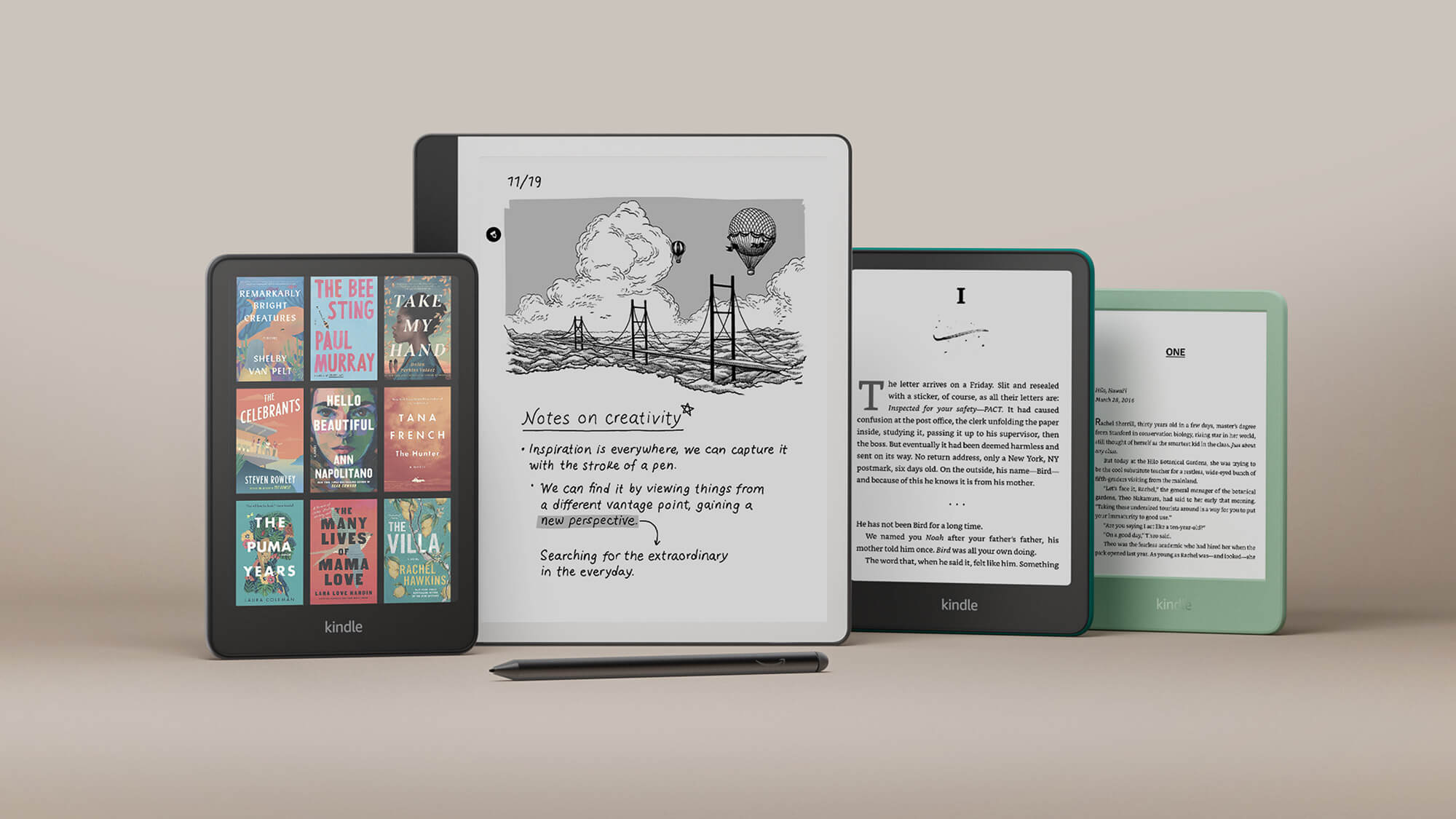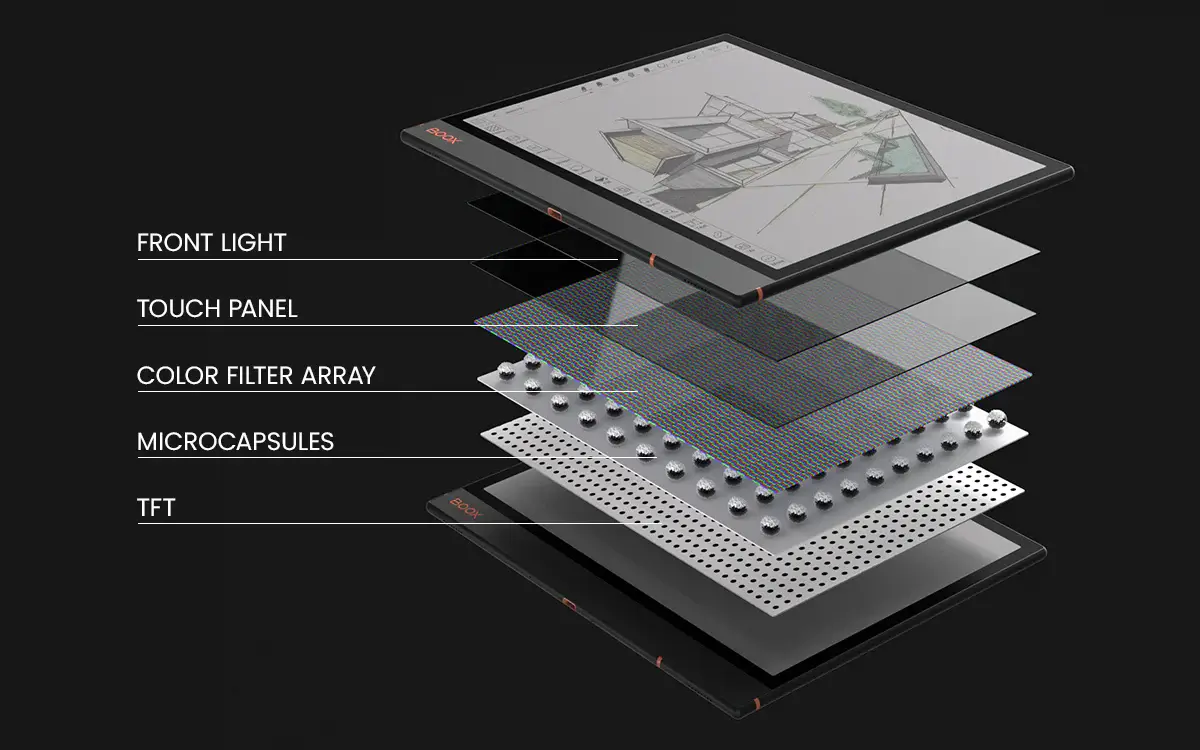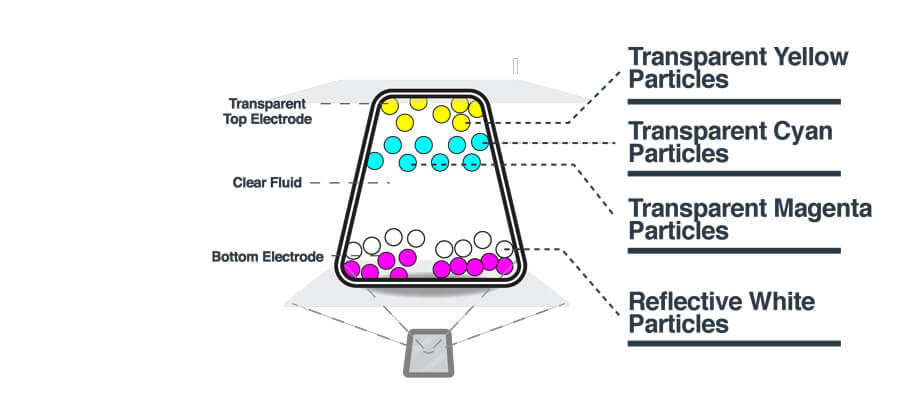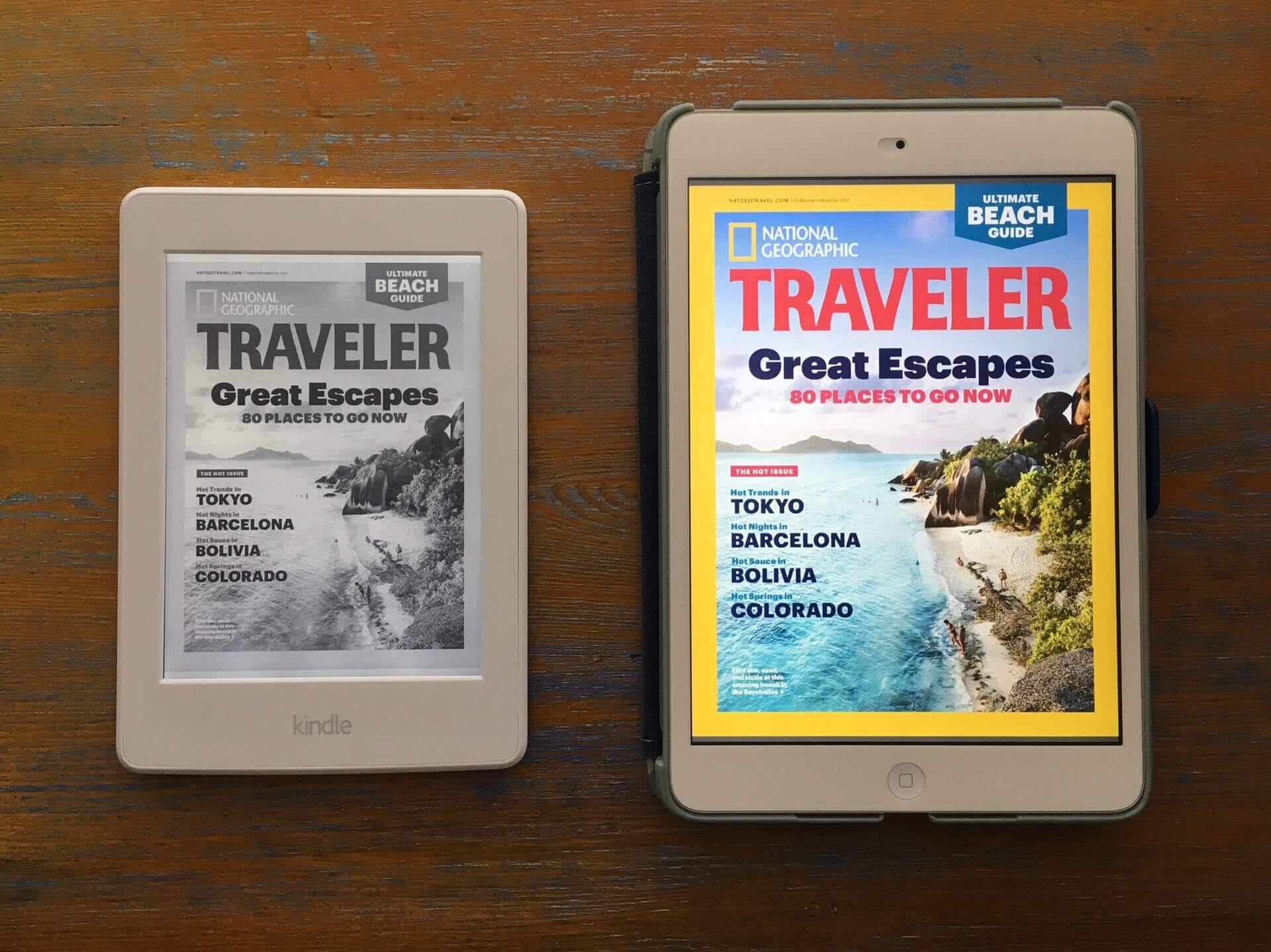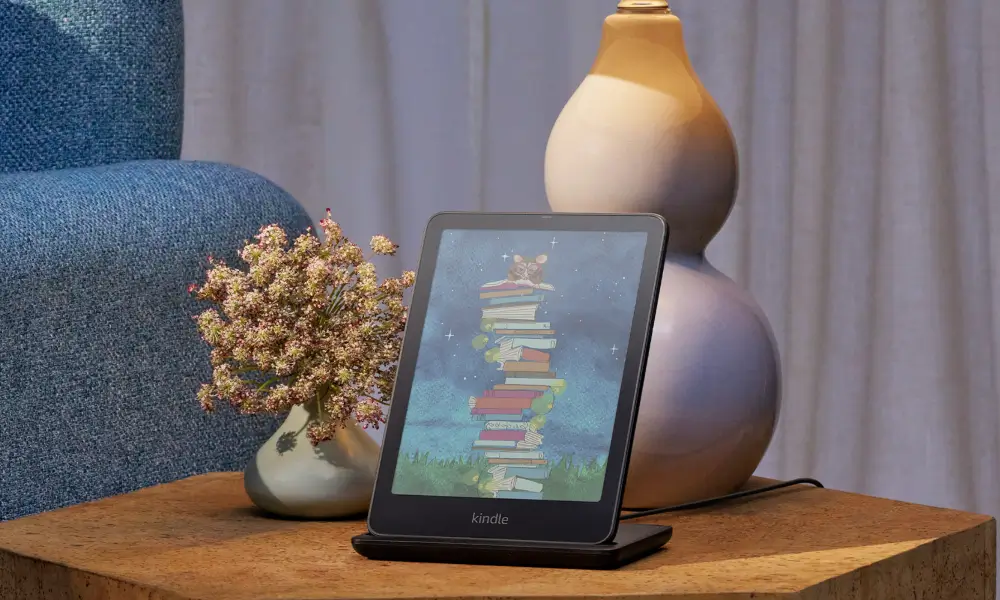Color e-readers have been around for over a decade, and some brands, such as Pocketbook and iFlytek, have experimented with the technology. However, neither of their products has sold very well. E INK has invested hundreds of millions of dollars in refining the technology with the intention of mass market appeal. It has now hit critical mass with the Amazon Kindle Colorsoft, Kobo Libra Colour, Kobo Clara Colour, and the Remarkable Paper Pro.
Smaller brands have also embraced the latest generation Kaleido 3 e-paper. Most products are e-notebooks designed to view and edit PDF documents in full color and freehand drawing. They all run Google Android and have full access to the Google Play Store. This includes products from Onyx Boox, Meebook, Hyread, and Bigme.
The Technology
There are two kinds of color, E INK, that all of the companies embrace. The most popular is Kaleido 3. It offers richer colors, increasing its color saturation by 30% compared to the previous generation, E Ink Kaleido Plus, in addition to 16 grayscale levels and 4,096 colors. Kaleido 3 also uses E Ink ComfortGaze, a new front light technology that reduces the amount of blue light, with a reduced Blue Light Ratio (BLR) and Blue Light Toxicity Factor (BLTF) by up to 60% and 24%, respectively. BLR is the toxic blue to total blue light output ratio, and BLTF is the brightness to hazardous blue ratio. Additionally, the ink is responsive, so Kaleido 3 can play animations and videos.
The last few generations of color e-paper could only display 4,096 colors and 100 PPI. Kaleido 3 managed to increase the color accuracy to 150 PPI. This was accomplished by putting the Color Filter Array closer to the ink layer. The company did further updates to the print pattern; in the past, they used glass and switched to plastic. Do colors look washed out as in previous versions of Kaleido? E INK said K3 reduces the light scatter and loss of color. LCDs using CFA do not have this issue, given that they are emissive. The tradeoff is energy efficiency and eye fatigue. E INK is also using RBGW colors and not CMYK.
The second color, E INK technology, is called Gallery 3 and is only available on one current product, the Remarkable Paper Pro. Remarkable announced that instead of a 300 millisecond response time, they got it down to 100 milliseconds. Many people thought this increase was due to the engineers working at the company, but instead, it was E INK that improved it.
In a recent 2023 earnings report, E INK stated, “E Ink released the 8-inch advanced color ePaper (Gallery 3) in 2022 to enhance the experience of using color e-readers. In 2024, we will provide an upgraded version of Gallery 3 to deliver optimized performance and enhanced visual experience for customers.”
The optimized Gallery 3 e-paper display and some under-the-hood power made the reMarkable Paper Pro shine. In June of this year, E INK issued a press release stating they had formed a joint venture with Himax for the T2000. If you don’t know what this means, it is a next-generation color ePaper timing controller. The new TCON design drives screen updates faster with lower power consumption, supporting a broad spectrum of color e-paper technology platforms aimed at e-readers, e-notebooks, and digital signage. The T2000 eNote handwriting function enhances screen refresh speed to provide a smooth writing experience.
The T2000 represents a significant advancement in TCON technology compared to E Ink’s predecessor TCON, the T1000, which was introduced in 2019. The T2000 integrates E Ink’s proprietary color imaging algorithm, which supports E Ink’s latest full-color e-paper display technologies, including E Ink Kaleido 3, E Ink Gallery 3, and E Ink Spectra 6. In addition to delivering high-quality image colors, the T2000 processes color rendering more than ten times faster than the previous generation.
Pros and Cons
Color e-readers offer enhanced visual appeal, vibrant graphics, and a richer reading experience for graphic novels and comics. Digital textbooks and cookbooks provide additional value.
Several drawbacks include battery life, resolution limitations, and price. Unlike traditional black-and-white e-readers with a light grey screen and razor-sharp text, color e-readers try to use colors for the background and text. If you read e-books on them, the color saturation and fonts will never look as good as on a pure black-and-white e-reader.
Most people use a smartphone or tablet to do their reading. However, this does come with some drawbacks. The “Digital eye strain” and “computer vision syndrome” are now familiar conditions caused by the extended use of tablets, computers, and smartphones. With illumination provided by light-emitting diodes (LEDs), the screens of these devices are emissive, meaning they’re made visible by shining light at your eyes. The brighter your surroundings, the brighter those lights need to shine. Emitting light directly toward your eyes is part of what allows a tablet to produce vibrant colors. Still, studies have observed a lowered blinking rate among users looking at emissive digital devices, leading to dry eyes and feelings of eye strain. Among children, excessive exposure to computers and tablets can lead to conditions that impair the eyes’ ability to track across a page, making reading difficult.
Most of the light emitted by LEDs—the light source behind phones, tablets, and computers—comes from blue light, the part of the light spectrum with the shortest wavelengths and highest energy. Exposure to blue light has been shown to decrease the ability of cells in the eye to repair themselves, raising concerns about vision impairment, especially in children.
Additionally, while any light impacts the sleep-regulating hormone melatonin, research has shown blue light to have a significantly more powerful effect than light from other parts of the spectrum. Because interfering with our natural sleep cycles can lead to an increased risk of health conditions, including diabetes, heart disease, and depression, we need to be careful about our exposure to night-time illumination.
With an e-reader, each book page is “printed” in E Ink when you’re ready to read it. Because of E Ink’s paper-like quality, you can read on an eReader in a wide range of lighting conditions, just like a printed book. But with an e-reader, you can increase the font size and line spacing, relieving tired eyes that even a printed page can’t provide.
Future of Color E-Readers: Hype or Revolution?
Amazon, Rakuten Kobo, and Remarkable have all stated that their current generation of color e-readers is just the start. They plan to release new products in 2025 and beyond. Pocketbook, Onyx Boox, Bigme, and other smaller players will continue to release new products designed for reading books and taking notes.
E INK is the only player that powers the e-paper screens on every e-reader and e-notebook. They spend a lot of money on research and development to keep their tech current and offer their big clients exclusive new features to make them stand out. One such example is the Kindle Scribe, the first 10-inch E INK tablet to offer 300 PPI; now this is the norm.
E INK Kaleido 3 was released in early 2023, and Kaleido 4 is developing. It will likely be released in 2025 and offer a color resolution boost from 150 PPI to 200 PPI or even more. The better the resolution, the less saturated the screens look for long reading sessions.
I was never a fan of E INK Kaleido 3 technology since it could only display around 4,096 colors, and Gallery 3 could display 50,000. Sadly, Gallery 3 has some refreshing issues that need to be sorted out before more companies offer new e-readers using the tech. The best example of a great color e-reader is likely the Kobo Libra Color with physical page-turn buttons and the new Kindle Colorsoft, which visually is the best one on the market.
Michael Kozlowski is the editor-in-chief at Good e-Reader and has written about audiobooks and e-readers for the past fifteen years. Newspapers and websites such as the CBC, CNET, Engadget, Huffington Post and the New York Times have picked up his articles. He Lives in Vancouver, British Columbia, Canada.

